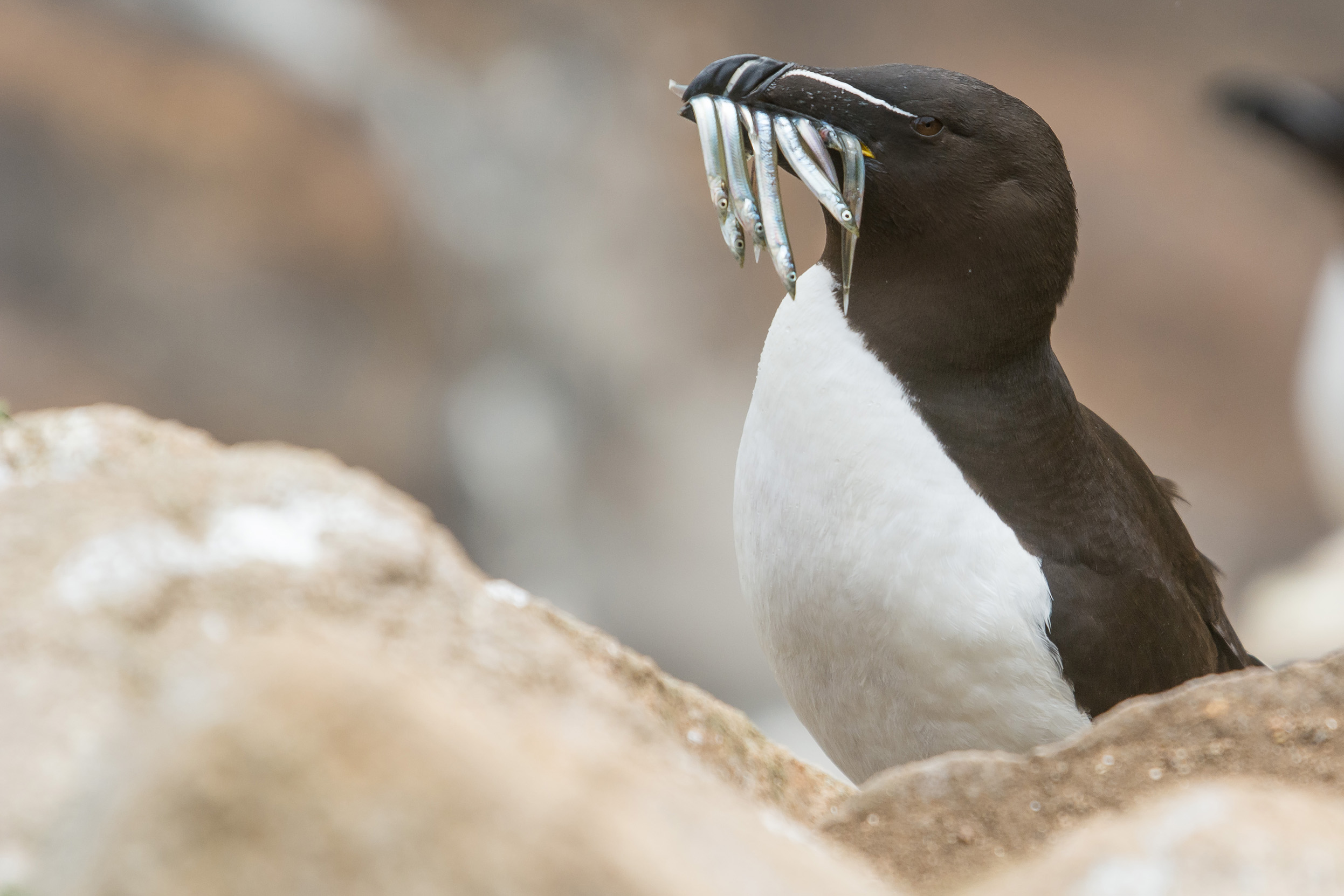The **Razorbill** (*Alca torda*) is a striking seabird native to the North Atlantic, often seen along rocky coastlines and islands during breeding season. With its sleek black-and-white plumage, this bird is easily recognizable by its sharp, thick beak, which gives it its name. Razorbills are closely related to puffins and guillemots, and like them, they are expert divers, using their wings to “fly” underwater while hunting for fish, particularly herring and sand eels.

Razorbills are monogamous birds that typically form long-term pairs, returning to the same nesting sites year after year. They breed in colonies on cliff ledges, where the female lays a single egg each season. Both parents share the responsibility of incubating the egg and feeding the chick, which fledges after about three weeks. Once the breeding season is over, Razorbills spend the rest of the year at sea, rarely coming to shore.

Close up shot of Razorbill (Alca torda) standing on rock cliff







Although Razorbills are not currently endangered, their population faces threats from overfishing, oil spills, and habitat loss due to climate change. As their primary food sources, like herring, become depleted in certain areas, these seabirds are forced to travel further to find food, which can impact their breeding success. Conservation efforts, including sustainable fishing practices and protecting their coastal habitats, are essential to preserving Razorbill populations in the future.